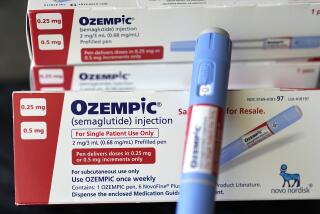Employers’ Cost for Health-Care Plans Rises Sharply
- Share via
NEW YORK — The cost of employer-sponsored health-care plans leaped 18.6% per worker last year after two years of single-digit increases, according to a survey released Monday.
Employers ran out of fresh ways to keep a lid on health costs after managing to limit their rise to 7.7% in 1986 and 7.9% in 1987, according to A. Foster Higgins & Co., which conducted the survey.
“The providers of care have gotten wise to some of the tricks and are compensating for it,” John Erb, the managing consultant who conducted the survey for the New York-based benefits consulting firm, said in an interview.
The average cost per employee of health care plans was $2,354 in 1988, up from $1,985 in 1987, according to the survey of more than 1,600 employers, whose plans cover 10 million workers and dependents.
The figures include the cost of plans to both employers and employees.
The medical-care component of the Labor Department’s Consumer Price Index rose 6.9% last year, making it the fastest-growing part of the inflation measure. But the cost of services is only part of the problem for employers and employees, Erb said.
According to Erb, these were some of the factors in last year’s big jump:
- Doctors are getting around controls on their hospital fees by shifting more work to an outpatient basis, where there are no restrictions on the fees they can charge.
- Doctors are requiring more follow-up visits, some of which may not be medically necessary.
- Expensive medical services such as heart and liver transplants are becoming more widely available, so more people are using them.
- The federal and state governments, strapped for money, are holding down how much they pay health-care providers for Medicare and Medicaid patients. That forces the providers to raise their prices to other customers.
“Not only is double-digit inflation back in health plans, there doesn’t appear to be much relief in sight,” Erb said in a written statement.
John J. Ring, chairman of the American Medical Assn., said in response that he did not see any evidence that doctors were reaping big fee increases from the shift to outpatient care.
Ring, a family physician in Mundelein, Ill., also said he would like to see statistics backing up Erb’s claim that doctors were requiring medically unnecessary follow-up visits. Erb said he did not have such statistics.
The 1988 increase was smallest, 15.6%, for companies with fewer than 1,000 employees, which usually pay for their plans through insurers.
More to Read
Inside the business of entertainment
The Wide Shot brings you news, analysis and insights on everything from streaming wars to production — and what it all means for the future.
You may occasionally receive promotional content from the Los Angeles Times.










